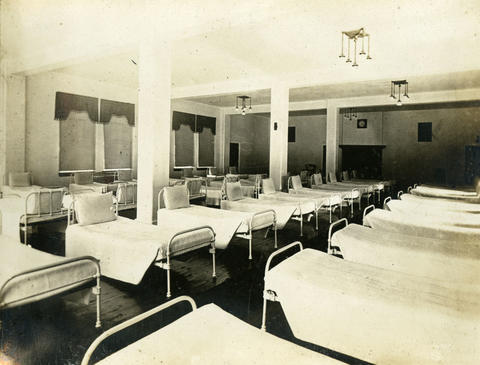Riverview Hospital: The birth of Coquitlam’s controversial psychiatric facility
Posted November 30, 2020 1:16 pm.
Last Updated November 30, 2020 8:03 pm.
COQUITLAM (NEWS 1130) – More than 100 years ago, a new “progressive” psychiatric hospital opened in Coquitlam.
From the day it began taking patients to the day it was shut down, Riverview Hospital has endured a long and difficult history.
“Men usually ended up in Riverview because they got into some kind of altercation with the law, and women were brought in by their husbands or fathers,” York University historian Megan J. Davies explains.
In 1913, Riverview Hospital opened in what is now the city of Coquitlam. It’s a shell of what it once was and is now a regularly used set piece in Canada’s film and TV industry.
But in its early days, Riverview housed nearly 5,000 patients. It was recognized as a model of psychiatric health care, one of the most progressive asylums in North America.
It grew to have an acute psychopathic unit, a 675-bed female chronic unit, as well as veterans and tuberculosis units.
The property itself also featured a nursery, botanical garden, and even an adjacent farm — known as Colony Farm — all of which were believed to have therapeutic benefits.
“By the 1950s, which is when it reached its peak of patient population, it was just like a little city,” Davies tells CityNews Vancouver.

Riverview Hospital featured, among other things, a farm known as Colony Farm. (Credit: City of Coquitlam Archives)
And while it was modelled to mimic a community, Riverview was one in which residents could not leave.
There was a dark side to the institution. At the time, Riverview was known as an insane asylum. Patients were often subjected to practices, like electroshock treatments and sterilizations — procedures that would become highly criticized in later years.
“There’s a tendency in those large institutional models for abuses to go unchecked and for many years there were no good accountability mechanisms at Riverview,” says Marina Morrow, professor of Health Policy and Management at York University.
Morrow says after World War II, psychiatric institutions in Canada became overcrowded. In 1950, there were 66,000 patients in psychiatric hospitals across Canada. Most, like Riverview, were over capacity. The so-called quality of care for patients suffered, as did the patients.
“A lot of these folks had lost connections with their families, some of the men and women we spoke with of course had children, some of whom hadn’t seen their children for many years. A lot of grief and loss and a lot of longing about wanting to have, quote unquote, a normal life,” Morrow explains.
“There were good people in the system and there were probably people who enjoyed having power over,” Davies adds. “And there were good ideas, but you look and you see the photos of Riverview at the end of that, in that mid-1950s and the beds are so crowded together. How could that be therapeutic?”
But the approach to mental health treatment was changing. Over the next few decades, patient numbers continued to drop and by the 1980s, the province came up with a plan to close Riverview altogether — a decision with lasting repercussions which would continue to be felt decades after its final patient left.
This is the first in a three-part special series on Riverview Hospital. Catch CityNews Vancouver at 6 p.m. and 11 p.m. here.












